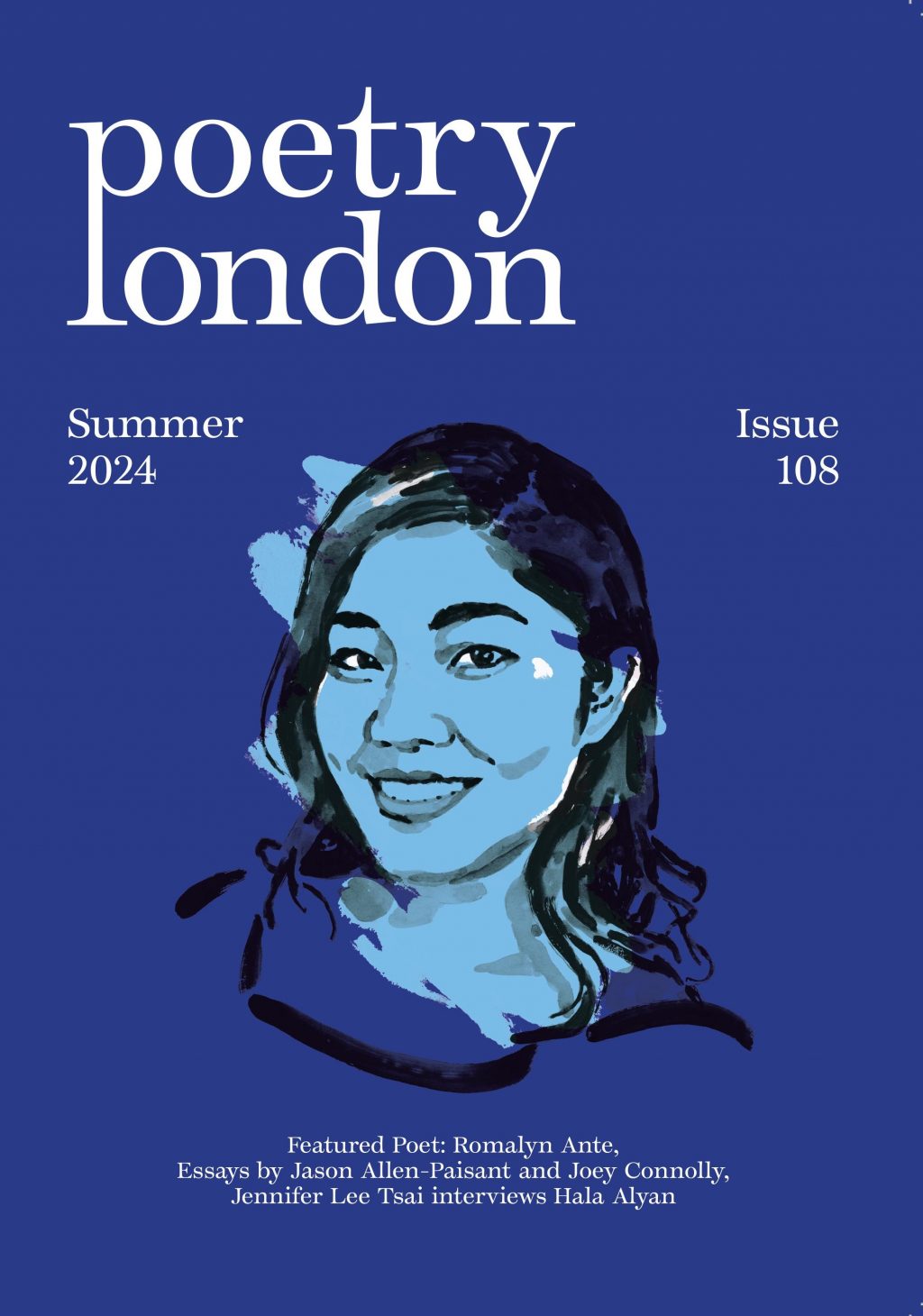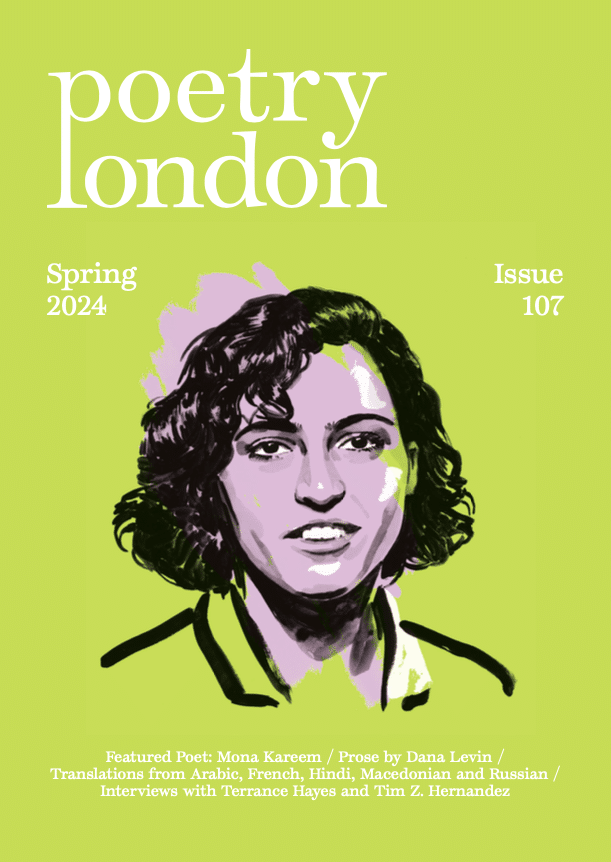Pushing Through to Redemption: Dai George finds poets exceeding the expectations they create
Luke Kennard
Cain
Penned in the Margins £12.99
Helen Mort
No Map Could Show Them
Chatto £10.00
In 2006 Luke Kennard held a funeral for irony. Commemorated in ‘A Sure-Fire Sign’, a poem from The Migraine Hotel, this ‘LOVING RHETORICAL DEVICE AND TENDENCY’ (as the headstone put it) has nevertheless continued to dominate the conversation both within and around Kennard’s poetry, however he may have wished it dead. One could read every book that Kennard has written since as an attempt to exorcize this unquiet, zombie irony. So far it’s been a recursive battle, punctuated by long interludes of surrender, yet over and again the rearguard action has come: the effort to find a living language that can escape the haunting.
Kennard’s showdown with sincerity usually plays out in dialogue with an interlocutor, most famously ‘The Wolf’, a sort of huckster psychoanalyst with all of his client’s worst interests at heart. The Cain of Cain is a more troubling companion, who observes sin with the debased relish of an addict, the wince of a fallen veteran. His sardonic commentary comes as an intervention that holds little hope of succeeding, but must be attempted nonetheless.
The supermarket’s logo is resplendent in the twilight.
When I scan the first bottle the automated checkout says
Approval needed and Cain says, ‘She really gets you.’
(‘Artificial Signs’)
In this finely turned joke, the power of Cain’s insight dislodges the dead primary meaning of the checkout’s words, insisting on the auxiliary psychological sense. It’s irony turned inside-out, if not quite exorcized then surpassed.
Across the first and third of the collection’s three sections Cain is the sort of ambivalent spirit guide who sits comfortably enough in Kennard’s back catalogue. Sandwiched between these sections, however, is the central sequence that Cain is likely to become famous for, ‘The Anagrams’, which sees Cain fade into the warp and weft of a grander project. Kennard has always been a writer with deconstructive, avant-garde tendencies, and these dazzling performances take us further into the treacherous materiality of language than ever before. Yet the final effect is gloriously reconstructive: not one of abject or triumphal scepticism in the face of meaning, but of tentative spiritual assertion, even redemption.
First, the nuts and bolts: there are thirty-one anagrams in total, each a reconfiguration of Genesis 4: 9-12, the passage where God confronts Cain after he has murdered Abel. Together they delineate the first season of the invented cult TV programme Cain, a show centred on three central characters, Cain, Father K and their long-suffering female sidekick Adah. For every episode there is an anagram, and in this postmodern, intertextual universe it’s an open question whether the anagram is the episode – not a summary or paraphrase but the thing itself. The central constraint of the form (Kennard lists the three hundred and fifty-five letters available to him at the start of the sequence) generates predictably riotous results:
<Doorbell.> Adah in Burberry, bathed in hall-light. Adah, rosebud torturer, co-author of overset thermometers. Adam,
outshining hydrogen trinketry.
(‘Anagram iii’)
Surrounding each anagram we find a perimeter text, strikingly set in red. These external commentaries serve at once to license, contextualize, undermine and extend the semi-sensical anagram they contain. Full of the patter of cult TV fandom (show runners, ‘first person POV’, ‘off-kilter sensibility’, the Bechdel Test), they can be enjoyed in their own right as whip-smart metafictional entertainments, though I believe they work towards a greater spiritual purpose as well.
I spoke of redemption, and that’s a big claim to make for work that seems to go out of its way to be aleatory and anarchic. To back myself, I’d start by pointing to the book’s fascination with logorrhea, a phenomenon defined in the first anagram as ‘a communication disorder: to be excessively and largely nonsensically talkative’. Excessive talkativity is the condition that threatens all of Kennard’s writing, a pressure that he copes with by naming, embracing the problem. The perimeter texts of the anagrams represent, among many other things, a fantastic, extended bout of logorrhea: the central anagram is literally hemmed in with the hyperactive explanation that surrounds it.
What has any of this to do with spirituality? First, there is the surface – but hardly superficial – way in which these explanations recall the process of exegesis. Gnomic and dense, the anagrams require the intercession of an interpreter: Kennard, in a manner of speaking, becomes his own biblical scholar. This ploy would risk a shallow irony if it didn’t reveal a deeper truth: namely, that the act of speaking (or over-speaking) in an effort to discover meaning is an inherently spiritual pursuit. In their radical mystery, the greatest texts are bound to elude us. We have a choice either to shut up shop – to shrug and join the internet trolls in saying ‘TL; DR’ (‘too long; didn’t read’, a phrase beautifully vivisectioned in the eighth anagram) – or to enter into them imperfectly, restively, through the logorrhea of our interpretations. By opting for the latter, Kennard’s anagrams proceed finally, painstakingly, towards a state of grace where that verbosity is cured. From the thirtieth anagram, the perimeter text is replaced by a constellation of crosses, or plus signs. Finally these come to enclose a prayer: ‘Foot the noun. Whatever it takes. Lord, have mercy. Gospodi pomiliu. Kyrie Eleison.’
In a very different book, Helen Mort echoes Kennard’s desire to push through into a new and superior type of language:
I mean to say there must be better ways of putting things,
unwritten routes, stone-knuckled paths to overshoot, words
practised till they come out rough.
(‘Hill’)
‘Practised till they come out rough’ is an intriguing formulation, suggesting that words might grow stranger and more revealing the more they are used. Mort’s relationship with cliché is almost diametrically opposed to Kennard’s: where Kennard admits a received phrase into a poem, it is usually to expose the poverty of thinking that lies behind its use; for Mort, clichés represent a legitimate trove of shared speaking and shared wisdom. ‘I know you at arm’s length, / like the back of my hand,’ ventures the untitled and italicized opening poem, teasing out how our idioms for knowledge hinge on bodily familiarity. The notion of an old favourite powering through and finding a new lease of life returns in a sweet poem dedicated to ‘Lethal Roy’, a greyhound ‘who steals the show / while no-one’s watching, / outrunning surprise’. This image could double as a tacit defence for the demotic mode that Mort’s poetry adapts from Duffy and Armitage and skilfully carries forward into the twenty-first century.
Tellingly, such poetry has to be imagined as the underdog nowadays, regardless of its relative commercial success. Mort’s gambit is to reawaken us to pleasures that can ‘outrun’ the surprise that the cynics and tastemakers are accustomed to demand in modern poetry. As ‘Hathersage’ reminds us, ‘It’s hard to say a thing simply’. However, like that of Kennard and his postmodern peers, Mort’s poetry strives for an eloquence and intensity of experience that lies beyond the bounds of language. For Mort, this purer zone of meaning can be found in nature, a space the human body encounters as a secondary presence, a more or less welcome guest.
No Map Could Show Them is a collection devoted to outdoor athleticism, with many poems taking their occasion or theme from mountaineering and cross-country running. Time and again Mort writes about the moment when, at a peak of exertion or joy, the body is forgotten and becomes one with the landscape.
And as you climbed,
you clambered from your own taut skin
and watched yourself, amused…
(‘Solo’)
This comes from ‘Black Rocks’, a sequence dedicated to the memory of Alison Hargreaves, a climber from Derbyshire who died descending from the summit of K2 in 1995. There is something of a death wish foreknown in Mort’s projection of her as ‘free, auditioning / to be the high, indifferent sun’ (‘Solo’), her ‘figure / brief, joined to the sky’ (‘Routes’).
This paradoxical instinct – half ecstatic, half self-abasing – finds a harmony in Mort’s first-person lyrics of place such as ‘Kinder Scout’:
Gold light. I wish the day
could break me like an egg
so I’d ooze the same colour, flatten
on the skillet of Mam Tor.
The violence latent in this image gestures to another, more troubling nuance of the collection’s corporeal imagery: the aggression, both cultural and physical, external and internalized, that still attends the female body in modern life. With bitter, sympathetic irony, ‘My Diet’ vocalizes the self-scrutiny and self-immolating fear of the hardline modern dieter; several poems advocate eloquently on behalf of other (or all) vulnerable and violated women, such as the superb ‘Rachel in Attercliffe’, a sonnet deploying some of the most adroit and socially necessary full rhymes since the Armitage of Kid.
No Map Could Show Them occupies a confident, timely space at the intersection of two crosscurrents in contemporary literature: the revival in nature writing spearheaded by one of the collection’s champions, Robert MacFarlane, and the renewed discourse surrounding the body that has gradually made the journey to Britain from radical American writers such as Claudia Rankine and Maggie Nelson. Mort navigates this complex terrain deftly, on a legitimately populist scale, and can be forgiven those few moments when her poetry feels as familiar as the back of someone’s hand.
Dai George’s first collection, The Claims Office (2013), is published by Seren.

